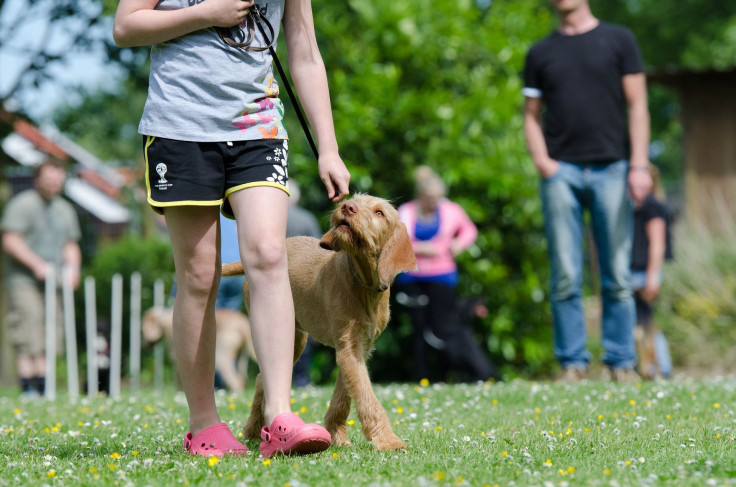Rescue Dog Helps In Saving Endangered Killer Whales In Pacific Ocean With Poop-Detecting Skills
KEY POINTS
- Dr. Deborah Giles adopted the pooch in July
- It spent weeks learning to associate the scent of Southern Resident orca scat with the help of a toy
- The canine has a strong toy drive, a key trait to become eligible for the detection work
A researcher at the University of Washington Center for Conservation Biology adopted an abandoned dog from an animal shelter which later helped her study the endangered killer whales better by sniffing their poop.
Eba, a mixed-breed rescue pooch, was abandoned outside an animal shelter in Sacramento, Calif., from where it was adopted by Dr. Deborah Giles, a killer whale researcher at the University of Washington Center for conservation biology.
"I had no idea when I kept her that she was going to become a conservation canine," Giles told Today. Eba was trained to detect wildlife scat in a training program run by the research center where Giles works.
Under the program called Conservation Canines, dogs are rescued from animal shelters and prepared to undergo the training. Studying the feces is a method adopted by the conservation biologists to collect a great deal of scientific data about the health and well-being of the southern resident killer whales.
Giles recognized Eba’s potential to become a conservation canine from its strong toy drive, a key trait to become eligible for the detection work after it kept shoving a ball into the hand of her colleague, trying to get him to play, the outlet reported.
Researchers tend to maintain distance from whales while studying them so as not to cause them any disturbance or stress. "That’s where the dog comes in because they can smell these things from a mile away — literally a mile away," Giles said.
Eba was trained for weeks to sniff out scat of Southern Resident orca with the help of a toy. "By Eba’s second day on the water — July 6, 2019 — she found her first wild whale scat by herself, which was amazing," Giles told Today.
Researchers collect blubber samples from whales with a biopsy dart to monitor their health, but studying orca scat can reveal an equal amount of information about the whales’ health without the risk of injury, according to Wild Orca, a group working to protect killer whales living in the northern Pacific Ocean.
A range of data such as the DNA of an individual whale, its recent meals, pregnancy and stress levels can be collected by examining whales' poop. Through the feces, scientists can also detect the presence of chemicals and other pollutants in the sea.
Eba manages to distinguish between different whale poop by their unique smell. Whenever it smells orca poop floating on the surface, it uses its body language to point in its direction and the scientists are able to collect the sample before it sinks.
"The dog is on the front of the boat just kind of hanging out and sniffing, and then when she gets a hit, she has a pretty massive behavior change," Giles told Today. "As we pass through the center of scent cone, which is the strongest portion of that smell, she’ll whip around to the side of the boat to tell us, ‘Hey, wait a minute – you’ve passed it.’ That’s when we turn into the wind," she said.
The community of southern resident killer whales, top predators in the Salish Sea in the Pacific Ocean, was listed as endangered under the Endangered Species Act in 1973. As of 2020, there are only 74 Southern Resident killer whales left, including two babies.
Gathering data on the species is an important way to help inform the policymakers and the public about their status, Giles told the publication.
Meet an unusual research assistant during The Age of Nature, a documentary series that explores humanity’s relationship with nature and wildlife. #AgeOfNaturePBS begins Wed, Oct 14 at 10/9c. https://t.co/ihbfPKQKhe
— PBS (@PBS) October 7, 2020
Eba’s work will be documented in the upcoming PBS series, "The Age of Nature," narrated by Uma Thurman. The three-part documentary will premiere on Oct. 14.

© Copyright IBTimes 2025. All rights reserved.






















